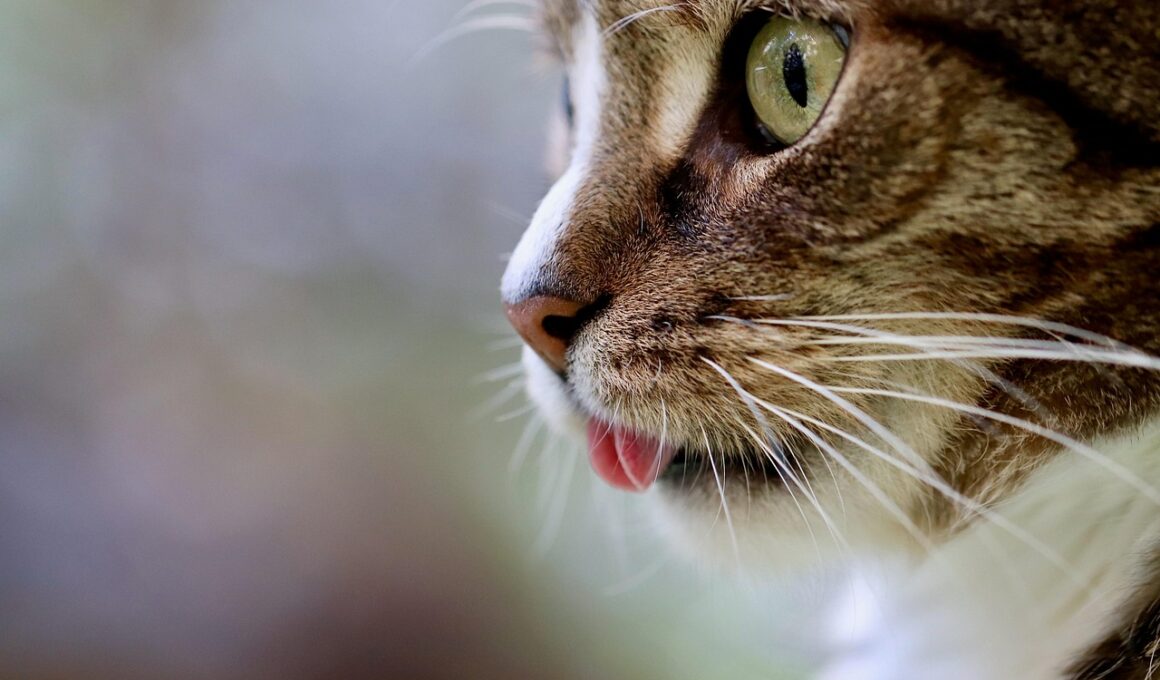Tools for Managing Cat Behavior During Rescue
Rescuing cats is an essential service that requires careful planning and effective tools to manage their behavior. Having the right supplies can make a significant difference during rescues. What do you need? First and foremost, a sturdy crate is essential for transporting cats safely. Look for crates that secure well and provide adequate ventilation. Secondly, soft bedding should line these crates to ensure the animal’s comfort. Another important tool is a calming spray that uses pheromones to help reduce stress during transport. Along with these, gloves are necessary to protect rescuers from scratches while handling frightened animals. You might also consider a calming collar that can give additional help during the stressful rescue process. A harness and leash can make it easier to guide the cat without any potential danger involved. Don’t forget to have treats nearby; they can help to establish trust and motivate the rescue animal. Lastly, ensure you have a first aid kit ready for any emergencies. Each of these items plays a crucial role in ensuring a successful and safe cat rescue.
Next in your toolkit should be proper equipment aimed at controlling and understanding cat behavior. Behavioral aids might include tools such as the Feliway diffuser or calming gel. The Feliway can help reduce stress inside both your home and the transport areas. Likewise, a comprehensive understanding of feline body language can go a long way in improving your interactions. Knowing how to read signs of fear, aggression, or anxiety can help you respond appropriately. For example, a cat’s tail position, ear orientation, and vocalizations can provide insight into its emotional state. Alongside behavioral comprehension, it’s also important to invest in quality carrier covers that obscure the view of other animals, reducing their stress. A portable litter box is also essential, especially during long transport times; it provides a sense of security and comfort. If more significant intervention is needed, consulting a vet for behavior modification techniques is recommended. By combining effective tools and knowledge, you can significantly improve your ability to manage cat behavior while rescuing those in need.
Transport Tools and Their Importance
Equipping yourself with the right transport tools is vital during cat rescue operations. When you prepare to capture a cat, consider using a humane trap. These traps can help you safely secure a feral or frightened cat without putting either party at risk. Select a trap that is easy to set and transport, and that includes a bait holder for effective catching. Additionally, wear gloves to protect yourself when handling the trap or the cat. After securing the cat, transfer it into the crate gently to avoid causing panic. Also, ensure that the transport vehicle is safe and quiet, minimizing disturbances. Another useful tool is a blanket or towel that can be thrown calmly over a frightened cat. This will create a sense of security by blocking outside stimuli. Note that having multiple carriers is beneficial; sometimes, it is necessary to separate cats for safety reasons. Clearly, each of these transport tools plays an essential role in promoting a smooth and efficient rescue, minimizing stress for both you and the cat.
An equally important aspect is the use of enrichment tools to calm cats and help them transition more smoothly into new environments. Once rescued, ensuring the cat has access to comforting toys can greatly assist in relieving anxiety. Scratching posts, soft beds, and interactive toys can occupy and calm a rescued cat, decreasing the chance of behavioral issues. It’s also crucial to use toys that can stimulate natural hunting behavior, keeping their minds engaged. Along with toys, food bowls must be stable to prevent spillage during transport. Use non-slip bowls whenever possible. Always provide fresh water, too; hydration is paramount during transport. Consider toys that can be intellectually stimulating, such as puzzle feeders, which slow down eating and offer mental challenges. Once you arrive at the shelter or clinic, the environment should be as calm as possible. Reducing noise and sudden movements will help settle a cat quicker than if left in an unprepared area. Enrichment tools not only facilitate relaxation but also promote healthy socialization in rescued cats.
Training Techniques for Effective Rescue
In addition to tools and supplies, it is beneficial to incorporate training techniques when managing cat behavior. Effective training can increase the success rates during rescues. Start with socialization techniques to prepare cats for human interaction. Use positive reinforcement to encourage desirable behaviors. For instance, a soft voice and treats can create positive associations with human handlers. Implement techniques like clicker training soon soon after a cat has been safely secured. Clicker training is an effective method for both motivation and behavior shaping. Additionally, gradually introducing the cat to different stimuli, such as sounds and types of handling, can help them adapt faster to new environments. Training aids such as clickers, treats, and toys can enhance this process. Regardless of training methods, patience is crucial; each cat is unique and may progress at different paces. Following training sessions, always provide a calm environment for cats to digest their experiences. By equipping yourself with training techniques, you can foster a smoother transition and help them trust human caregivers.
Moreover, understanding the unique characteristics of various cat breeds can influence your approach in managing their behavior during rescue operations. Different breeds possess varying temperaments, which will impact how they react to rescue scenarios. For example, Siamese cats are often more vocal and assertive, while Persians may be more laid-back and look for comfort. Familiarizing yourself with these traits can help better predict behavior patterns in different situations. Researching breed-specific needs may also help to create tailored interaction techniques. Additionally, knowledge on health considerations across breeds is essential; certain breeds may have unique sensitivities or health concerns that must be addressed quickly. Tailoring your strategy to accommodate breed differences can increase the likelihood of a successful rescue. By combining an understanding of these differences with appropriate tools, rescue workers can improve outcomes during challenging situations. Resources like websites and books from feline behavior experts can provide more insights into these considerations. Broader awareness significantly influences safety and comfort for both rescuers and the cats involved.
Evaluating Tools and Supplies for Effectiveness
Finally, it is crucial to regularly evaluate the tools and supplies in your cat rescue toolkit for effectiveness and suitability. Periodic assessments can identify all items that require replacement or upgrades. Gathering feedback from other rescuers can provide valuable insights about what worked well and what didn’t. Monitor the condition of your supplies; damaged or worn items can pose safety risks. Consider organizing regular training sessions with your team to practice using these tools. Testing various techniques with actual cats in controlled environments can refine your skills and shed light on any tool shortcomings. Stay updated with new products and innovative strategies in the cat rescue field. Some tools might become outdated or less effective over time, making regular research essential. Attending workshops and conferences can help with networking and learning new methodologies. Always strive for continuous improvement in both tools and techniques. Regularly adjusting to new and emerging cat behavior trends also has lasting benefits for rescues. By evaluating and improving your resources consistently, you’ll enhance the skills and comfort levels of both cats and rescuers alike.
This wraps up the discussion on tools and supplies for rescuing and managing cat behavior effectively. Always remember that your success in cat rescue not only depends on the tools at hand but also your empathy and understanding of feline needs. Prepare adequately, equip yourself with the right supplies, and stay informed about behavioral trends in cats. This approach will not only help save cats but will also improve their transition and integration into new environments. Continuous learning and practice can make your rescue efforts more effective. Rescuing cats isn’t just about rescuing animals; it’s an engagement with living beings who need love and understanding. The combination of appropriate tools, behavioral knowledge, and the right mindset will significantly contribute to the wellbeing of the cats you rescue. Always offer them patience and care as they adapt. Through this holistic approach, your rescue missions can create lasting positive impacts for both feline friends and their future families. In the end, being well-prepared showcases respect towards these beautiful creatures and advocates for their welfare, ensuring their best chance at a happy life.


